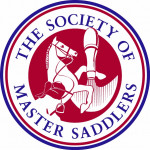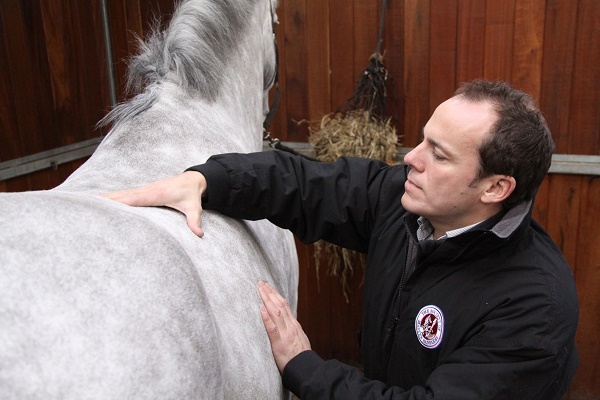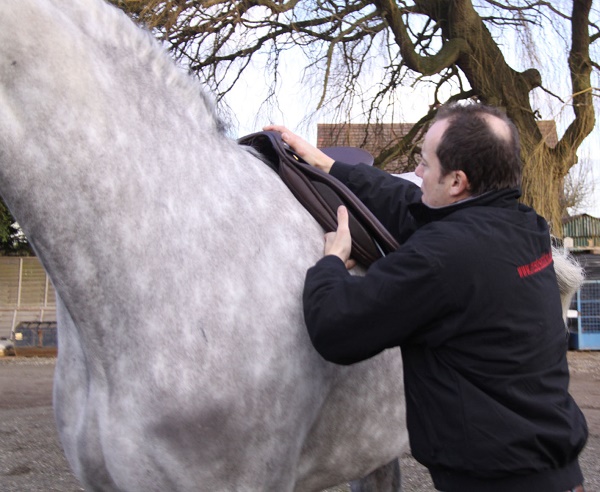Posted: 22nd October 2020 | Back to news feed

In this issue we talk to The Society of Master Saddles to find out more about the work they carry out, how saddles have developed over the years and the real importance of having a correctly fitted saddle.
A saddle is without a doubt the most important purchase for your horse. It is a well known fact that a horse needs a correctly fitted saddle to perform to the best of its ability, but is this idea really implemented fully. A badly fitted saddle can do a lot of damage, leading to behaviour problems or even lameness.
The huge influence the saddle has in relation to equine welfare, rider comfort and the production of optimum performance is being increasingly recognised by equine vets and physiotherapists, trainers, instructors and horse owners.
The Society of Master Saddlers (UK) Ltd was formed in 1966 to serve as a Trade Association for the craft retail saddler, but has since embraced all aspects of the Trade. The Society's aims are to safeguard the quality of work, services, training and qualifications of all those who work in the saddlery trade from manufacturers and retailers through individual craftspeople and saddle fitters.
For horse owners The Society of Master Saddlers acts as a standard that you should expect your saddle fitter to be a part of. Having a Society of Master Saddles Registered Qualified Saddle Fitter guarantees that they are fully qualified, professional and have a minimum of three years’ experience.
Before the Society of Master Saddlers launched its saddle fitting qualification, there was very little formalised training available. Coinciding with the introduction of the saddle fitting qualification, the SMS began an extensive programme providing information and advice about the importance of a correctly fitting saddle in relation to safety, wellbeing and performance. It is a fact that today’s horse owners are far more knowledgeable than their counterparts of even a few years back.
In the last couple of decades, saddle fitting has become more and more complicated. Firstly, whereas in the past most countries were largely reliant on indigenous breeds and types of horse, nowadays many breeds have become global. Consequently, today’s saddle fitters need a far more comprehensive knowledge of the conformation of different breeds. Secondly, there are more saddle designs on the market than ever before. Innovations continue to enter the market and ranges of specialist saddles are constantly increasing. The product knowledge demanded of today’s saddle fitters is far greater and more comprehensive than their counterparts of 20 - even 10 – years ago. And of course, saddle fitters must have a good understanding of the demands of the individual disciplines and sports and the regulations applicable to the use of tack.

SMS saddle fitters take pride in the help, information and advice they provide. Although every endeavour is made to accommodate the rider, the first priority is to provide a saddle that affords a good fit for the horse.
Saddle Checks
Horses change considerably over time. A horse’s ‘shape’ is very dependent on the horse owner’s management.
A horse can change shape for many reasons. Maybe he is enjoying a break from work turned out in a field with lots of grass. Possibly, the competition season is well under way, and he is leaner and more muscled than he was at the beginning of the season. Maybe he is a young horse and he is going through a period of rapid growth and development. Maybe his owner, school over for the summer, has vastly increased his exercise and schooling programme. Or perhaps he has lost condition over winter.
It’s surprising how many owners notice a rug getting tighter but the fact that the saddle no longer fits well completely escapes them. This is why it is very important to get saddles checked regularly.
Saddle fitting checks are an important part of horse care. Yes, they cost money. And yes, occasionally the saddle fitter may need to return quite quickly because the horse has changed shape so rapidly. This isn’t an unnecessaryexpense it is vital to make sure your horse is comfortable.
A saddle that is too narrow and is pinching and exerting other unwanted pressure - or too wide and pressing down and restricting the horse’s ability to use himself correctly - can result in welfare, veterinary, behavioural and performance problems. Overcoming the resulting problems could be expensive in terms of veterinary, schooling and other professional services. Meanwhile the horse has suffered totally unnecessarily.
Recognise that changes in exercise and feed regimes have the potential to alter the horse’s shape. Try to stick to the principle one saddle should fit one horse and remember a saddle adopts the contours of the horse, if placed on a different horse, it could be very uncomfortable. When a saddle suffers an accident or when the horse suffers a fall whilst being ridden the saddle should be examined by a Master or Qualified Saddler. Internal damage such as a broken tree can be difficult to spot and, not rectified, it may result in complicated veterinary problems.

Use the services of a Society of Master Saddlers’ registered qualified saddle fitter to undertake fitting checks regularly.Always have a new saddle fitted and recognise that it is at least equally importance to have a second-hand saddle fitted. SMS saddle fitters have a comprehensive knowledge of saddle brands and designs. They are aware of the rules and regulations applicable to tack and equipment used in all the equestrian disciplines and sports, and offer advice and professional services.
Information about the Society of Master Saddlers can be found on the website: www.mastersaddlers.co.uk or telephone 01449 711642.
The Equestrian Index newsfeed is compiled from articles submitted by advertising members and expresses the opinions of those members. Watsons Directories Ltd shall not be held liable for any inaccuracies or mis-statements therein.
